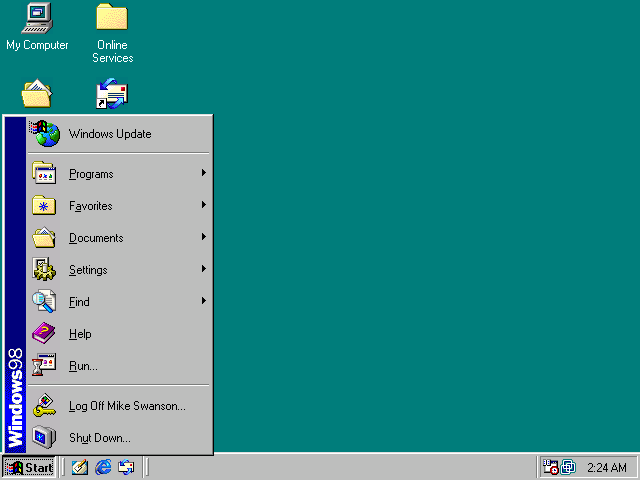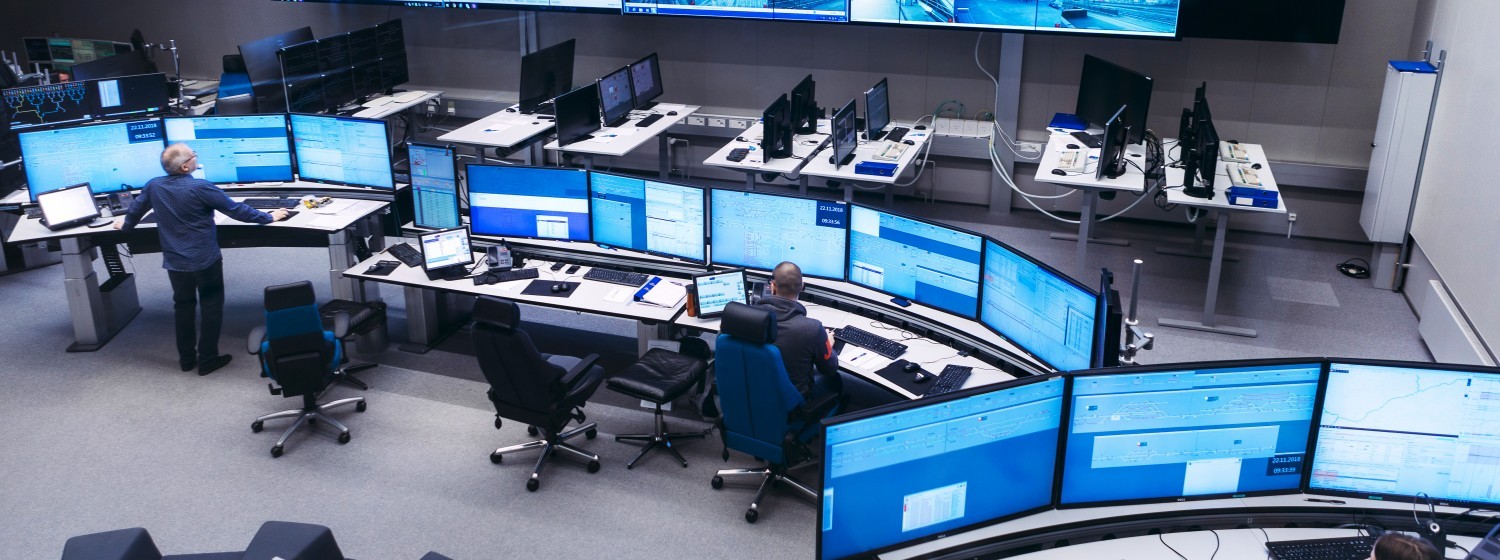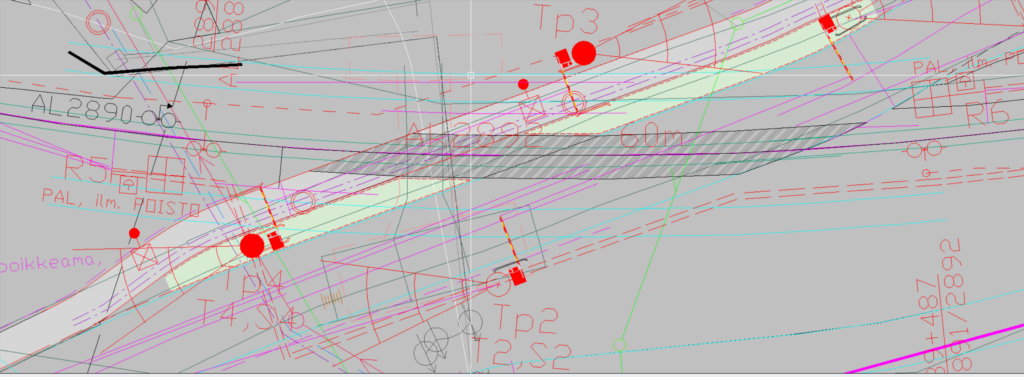Digitalising Work
No Digitalisation For The Elderly?
(Late 1990’s – 2010)
I’ve started my working life in late 90’s. I’ve worked both at forest sector (Stora Enso) and railway sector (VR Group) in the late 90’s. Computers had already taken their places on desks of the offices for good. Around the turn of the millenium I started working more and more in the offices. So I got a lot better view on digitalisation. Of course I had already seen the development outside work, but the big companies were shop windows of new technological achievements and innovations. The leaps considering the calculating power of computers was notable. It really made difference when a new computer was installed on your desk.
Those were the days: Windows 98 and Minesweeper on lunch breaks.

There were production management softwares, but a lot of work got involved with simple Microsoft Excel tables. And still then printing partially with dot matrix printers and sending documents by Fax, of course. I can still remember the sound of them. And the amount of paper jams. And ripping off the continuous form paper edges before punching holes to the documents to be mapped.
At that time it was very Hi-Tech for me, that the log trucks were sending their transport data (EDI) to the paper mill gate office when leaving the forest. Straight to the production management software. No need to fill in all the information manually.
I remember myself wondering when the technical development would start to slow down. And really had no idea where we would be today. As a young employee, I had no trouble getting used to continously updating software and equipment, but employees at their 50’s or 60’s had a much harder time on the ride. More than once, I heard someone saying: “I’m not going to try to learn this new thing anymore, because I have my pention waiting behind the corner.” During that time, there was maybe an illusion, that the digi leaps would only affect the working life. Computers and digital services came cheaper and cheaper, and you did not need to be rich anymore to take digi leaps at your home.
Rail Traffic Control Loses Its Papers
(2011-2018)
When I was working at rail traffic controlling, the digital development was significant. Still in early 2010’s we drew all the official traffic and maintenance markings and notation on large papers called “graphics sheets” and had some printed Excel sheets on the work desk. Of course to get filled by a pen and archived for years at the end of every day.
And surely we had no digital overall situation picture of the rail traffic. Lots of phone calls to get the information needed. When the development started a few years later, the wind blew really fast.
First we got REAALI++ real time graphics software to see at one sight where the trains are moving and the software produced some primitive prognosis of their movement. The movement data was taken from the rail sections of the interlocking. Then came LOKI (LiikenteenOhjauksen KIrjaukset) which dublicated the logging job for some time. All the markings were made both on paper and on software. Learning the new way slowly or lack of trust in digital only?
A bit later came the huge leap: you had to abandon all the papers! Really? When the digitalisation finally came big time, there really was some kind of threat of endangering the rail traffic security sometimes. The job can be quite hectic from time to time and there was sometimes a feeling you had to concentrate so much on documenting things digitally, you could easily forget to use the most obvious and important thing like setting the interlocking track blocking on in the area where the maintenance work was done. The only thing that would really prohibit the accident or collision. In some way it felt like the digital tools that should be there to help you, actually turned against you. Making your job very much harder and complicated.
Only the transition was somewhat painful. When I left the job in the beginning of 2018, I think no-one missed the “good old times” with papers. Good old times, yes – but not papers. In the beginning of the transition the tools were more than a nuisance, but later they really helped to do the job in easier, more systematic and safer ways. It only needed some time to get adapted and of course lots of software development.

Consultant POV
(2018 – Today)
In 2018 I changed the direction of my career and I joined the consultant scene, in railway signalling design. I started as a design engineer and a bit later started leading projects as a project manager and working as a supervisor, too.
I think the digital tools in the work itself has all the time been at least somewhat the same. Of course the hardware has become a lot faster and the software has got more sophisticated and smarter. Some things have still got more digitalised than others and that’s definitely the availability of initial data. In 2018 you had to order almost all the initial data from the technical rail archive owned by the Finnish Transport Infrastructure Agency (Väylävirasto) and in many cases someone actually scanned there old archived paper documents (if they had not already been scanned earlier) to the pdf or tiff format to send them to you. 2018, believe me.
Well, the process hadn’t changed so much even in 2024, but nowadays you can easily access the open data sources in different formats and even download the initial data from the other projects available and openly seen by anyone. The ProjectVELHO is the place where all the projects and initial data should end up in near future. We utilisate many kinds of open data resources provided by the FTIA and other public institutions. I’ve noticed that the growth of the number of open data services has maybe stopped and now there’s a pursuit of making the data more coherent, reliable and usable. In the design engineering, it has been an everyday problem that there are initial data and every source include different and contradictory information. Now there are serious attempts to get as much data as possible into the same bigger data banks and to get rid of as many initial data errors as possible. At the same time the overlapping services are being closed.
The most of the problems for utilising the data are related to the lack of expertise and some engineering software not supporting the file formats. You need to be quite an expert to get all the benefits of the open data and these experts are highly needed.
COVID-19 actually didn’t change our job too much. Of course it boosted the digitalisation and for example software development in general. Bu mostly for us, only the amount of remote work changed radically then. And we’re still little by little coming more and more back to the offices. We had the way of remote working available before pandemic and project teams seldom were at the same locations. But it still will never be exactly the same as it was before. Believe me, it is extremely hard to get some of us back there. Remote work has strong pros, but also some very strong cons. Both pros and cons need to be taken care of. The solution is a compromise between better flexibility and better interaction and management.

Paperless Office
There has been a lot of talk about paperless offices as long as I can remember. I have to admit, I haven’t actually ever believed in ones. But when I started thinking: when did I print something related to my work? I honestly say I can’t remember printing anything at least in a year, probably in two years. All the documents and plans are nowadays printed to PDF, sent and used digitally from smartphones, laptops or tablets. Even at field work. Despite of some device breakdowns and Internet connection problems, all the work still has got done in some way.
At home I’ve still printed things. Colouring pictures for my children! The crayons and pencils have not got and will not get digitalised at our home – even if it would be a lot more secure way, I think – for the furniture.
Too Open Data
At the same time, more data and open data being too open has become a serious security threath. Especially after Russia invading Ukraine, the concern has become more and more justified. Actually some of the earlier open data has disappeared and become classified, but you know that if you put something in the Internet, you can’t just click the reverse button. It’s quite disturbing to think how easy it has become for almost anyone to get data that in the hands of wrong person could cripple at least locally the transport systems, cause accidents or endanger the traffic security. There are also lots of additional data resources to help with maximizing the disruption.
I think a lot more control is needed. Like user accounts with identification processes and permissions allowed only for justified purposes.
GDPR – Counter-Attack Of The Lost Privacy?
The General Data Protection Regulation — or the GDPR – regulates and protects the processing of personal information. It outlines new data protection laws and principles that expand the privacy rights, granted to individuals. The GDPR ensures companies to be transparent about the personal data they handle and have a legitimate purpose for using it. GDPR establishes rules on how companies, governments and other entities can process the personal data of citizens who are EU citizens or residents.
According to GDPR there are a notable requirements considering personal privacy and breach notifications. Organisations and companies breaking the GDPR legislation will face very heavy penalties, so they just can’t ignore privacy and data security things anymore. Data should and will be more and more protected. Anyone can ask and access the personal data of his own and claim for its removal, for example.
When there is a breach, you have to get informed about it practically immediately. This all should increase the trust between customers and companies. I think there are not many companies that would ignore the security of the personal data of the customers or even store the data they don’t really need. The breaches are nowadays in the news in no time at all and in worst case scenario, that kind of advertising might be the end of your whole business.
In my own work, I have noticed that less and less personal information will get stored and fewer people get access into it. The lack of access is causing some extra work and waiting often. Security requirements have also become very strict. You have to wear ID cards almost everywhere and your computer asks for identifications numerous times a day and locks the screen if you’re not moving your mouse in five minutes. There has also been a lot of resistance for change, claiming that we’re making our own job almost impossible, but actually we’re securing our jobs for the future. There still is a lot to change in attitude against digital security things.
AI Taking Over?
The Artificial Intelligence is the word of today. Everyone talks about it. I think it delights and frightens people at the same time. There is a fear of AI taking our jobs and eventually destroying the people and whole planet. And there still is at least some truth in it. The first part at least. Actually the AI will change our jobs but we are still needed elsewhere.
The amount on knowledge we need and use to get our jobs done have perhaps (and hopefully) reached its limits and maybe the AI will save us from the chain of unavoidable burnouts in the future. I have nothing against someone doing part of my job and let me concentrate on the things really matter. I work as a supervisor and humanity is needed and claimed more and more everyday. I think that I got my pention right behind the corner before AI can completely replace the human as supervisor. Maybe the AI will bring me the 6th, 7th and 8th senses, which I miss sometimes when solving group management related puzzles during my working days.
This Master Degree education has actually introduced the ChatGPT to me. I did knew what the ChatGPT was before, but hadn’t really used it once. Well, I have used it a bit now. The answers the free version 3.5 produces are usually actually quite decent, but at this moment I don’t see too much intelligence in it. I would call it a little more sophisticated search engine that would write down the answers combining sources and without the need of visiting suspicious websites and sorting out the answers in a nutshell. I must admit, it helps you (probably) to point out easily the highlights of the thing being searched, but I wouldn’t trust too much in the answers. The thing that annoys me is the lack of source reference. You can also never be sure, if you asked your question in a way, you got some nonsense in your answers. I’m not also very confident it really could make conclusions if the data is complex enough and might include many different aspects and some subjective experiences. And you have to set the question in a right way. But in cases like explaining terms and even comparing things I’ve got acceptable and really good answers. I’m looking forward to the future versions.
Now I tested the ChatGPT by asking first a question: “How can AI help with railway signalling design”. Most of the first answers and solutions were somewhat for equipment suppliers and I needed to specify with further questions. Signalling engineering related solutions and benefits it proposed, were based on software algorithms optimizing different things like signalling element placement and for example creating safety and risk assessment data by creating scenarios, identifying hazards and recommending solutions. Sounds very interesting and these would be very welcome, but the AI would not definitely make the decision without a design engineer pressing “approve” button. But it would be a really great help if the AI would propose things and options and the design engineer would be the one who picks up the best option. Customer would thank too, if the AI would cut down all the possible costs by recommending the most cost-efficient solution that would do the decent job enough there.
Maybe AI wouldn’t really take over us, but come next to us, instead.
In that case I say: Welcome!
Self Evaluation
Choosing this studying course Digitalised Working Environment was an easy choice for me. Digitalisation has an enormous meaning in our lives and especially in our working life. I really had a nice time coming back to the beginning of my working career and spending some time thinking how has the things have changed during the last 25 years.
Not everything is positive, though. Commercialism is one of the main reasons for losing at least almost all of our privacy. GDPR is a good attemp to think things again. How far has the battle for customer souls gone, before we realise we have to found our ways to care about our privacy.
The other threat is the cyber crimes. In many cases someone gets big financial or other advantage by performing data breaches or denial of services. Sometimes the only purpose is to shake our feeling of safety and trust.
It has been and probably still sometimes is too easy to forget the security and privacy while making and exploring new innovations. I have not been the loudest against the change and for example “security causing unnecessary annoyance”, but I now understand even better the need and importance of cyber security. It is an investment (and yes, sometimes also a sacrifice) we have to make to have better odds to be and work here also tomorrow.
My Comments On The Blogs Of Other Users
Juha’s site by Juha Hiltunen: https://blogi.savonia.fi/juhahiltunen/digi-society/#comment-2
Journey to digitalisation in work field by Minna Silventoinen: https://blogi.savonia.fi/journeytodigitalisationinworkfield/digi-society/#comment-2
